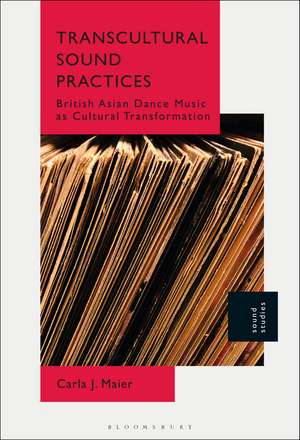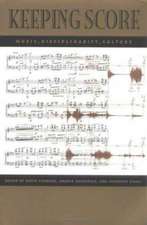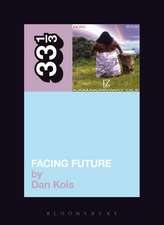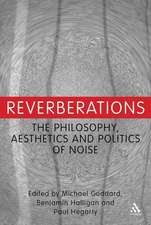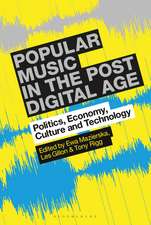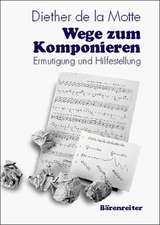Transcultural Sound Practices: British Asian Dance Music as Cultural Transformation
Autor Dr. Carla J. Maieren Limba Engleză Paperback – 25 aug 2021
| Toate formatele și edițiile | Preț | Express |
|---|---|---|
| Paperback (1) | 217.17 lei 6-8 săpt. | |
| Bloomsbury Publishing – 25 aug 2021 | 217.17 lei 6-8 săpt. | |
| Hardback (1) | 656.23 lei 6-8 săpt. | |
| Bloomsbury Publishing – 5 feb 2020 | 656.23 lei 6-8 săpt. |
Preț: 217.17 lei
Preț vechi: 274.63 lei
-21% Nou
Puncte Express: 326
Preț estimativ în valută:
41.57€ • 42.78$ • 35.04£
41.57€ • 42.78$ • 35.04£
Carte tipărită la comandă
Livrare economică 28 februarie-14 martie
Preluare comenzi: 021 569.72.76
Specificații
ISBN-13: 9781501385988
ISBN-10: 1501385984
Pagini: 240
Dimensiuni: 152 x 229 mm
Greutate: 0.32 kg
Editura: Bloomsbury Publishing
Colecția Bloomsbury Academic
Locul publicării:New York, United States
ISBN-10: 1501385984
Pagini: 240
Dimensiuni: 152 x 229 mm
Greutate: 0.32 kg
Editura: Bloomsbury Publishing
Colecția Bloomsbury Academic
Locul publicării:New York, United States
Caracteristici
The interdisciplinary popular music analysis engages the fields of cultural studies, postcolonial studies, and sound studies, including urban soundscapes, functional sounds, sound in film and theater, and sound art
Notă biografică
Carla J. Maier is a Marie Curie Research Fellow at the University of Copenhagen, Denmark.
Cuprins
Preface AcknowledgementsIntroductionPart One Toward a Cultural Analysis of Sound Practices1. Renegotiating Culture in the Age of South Asian Dance Music2. The Concept of Trancultural Sound PracticesPart Two Listening to South Asian Dance Music3. Re-Fusing and Reclaiming UK Bhangra: Apache Indian, No Reservations (1993)4. Demystifying Asianness: Asian Dub Foundation, Community Music (2000)5. Sonic Fictions, Global Noise: M.I.A., Arular (2005) and Kala (2007)6. Performativity, Technology and the Body: Nathan 'Flutebox' Lee, Flutebox (2011)7. The Sonic Politics of Place: Dusk + Blackdown's Margins Music (2008)Part Three Thinking Sound as Cultural Transformation8. Conclusion - Transcultural Sound Practices in South Asian Dance Music9. Outlook - On Transcultural Sound Practices beyond MusicNotesReferences Index
Recenzii
Carla J. Maier has not only written a strong study on sound's importance for the notion of 'culture' and how it can be analyzed also in a non-representational way, but has done so in and as a series of interrelated arguments - sound studies, sonic fictions - that draw on practices, narratives and politics that relate the specific field of this study - British Asian Dance Music - to the larger field of aesthetics and 'the postcolonial condition'. This is an immensely ambitious and valuable project - and also a 'toolkit' for artists, educators and activists (almost calling for but also forging a 'conglomerate-type' of these three "professions"). A wonderful book!
While paying due attention to postcolonial and cultural studies of new ethnicities and political positions, Carla J. Maier's insights into British South Asian music shift the emphasis to the 'transcultural fabric' of sounds. This book brings sound studies and digital technologies more concertedly into the mix, reminding us that musical sounds and techniques are key agents in cultural transformation and the decolonization of everyday life.
This is a highly original and exciting study of some of the key figures who have defined South Asian musics in Britain. As much as that music was defined by its exciting 'fusions' (a word many of the artists disowned), this book treads a similar radical path, mixing sound studies, cultural studies and sociological approaches to popular music. This will appeal to anyone interested in British South Asian experience, and more broadly, to those interested in how sound itself articulates political and cultural identities.
While paying due attention to postcolonial and cultural studies of new ethnicities and political positions, Carla J. Maier's insights into British South Asian music shift the emphasis to the 'transcultural fabric' of sounds. This book brings sound studies and digital technologies more concertedly into the mix, reminding us that musical sounds and techniques are key agents in cultural transformation and the decolonization of everyday life.
This is a highly original and exciting study of some of the key figures who have defined South Asian musics in Britain. As much as that music was defined by its exciting 'fusions' (a word many of the artists disowned), this book treads a similar radical path, mixing sound studies, cultural studies and sociological approaches to popular music. This will appeal to anyone interested in British South Asian experience, and more broadly, to those interested in how sound itself articulates political and cultural identities.
